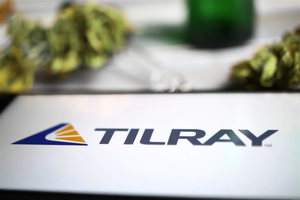The "Africa Cement Industry Market Size & Forecast by Value and Volume Across 80+ Market Segments by Cement Products, Distribution Channel, Market Share, Import - Export, End Markets - Databook Q2 2025 Update" report has been added to ResearchAndMarkets.com's offering.
The cement market in Africa is expected to grow by 8.1% annually to reach US$08.7 billion in 2025. The cement market in the region recorded strong growth during 2020-2024, achieving a CAGR of 8.8%. Growth momentum is expected to remain positive, with the market projected to expand at a CAGR of 7.6% during 2025-2029. By the end of 2029, the cement market is projected to expand from its 2024 value of US$08.1 billion to approximately US$11.7 billion.
This report provides a data-rich, forward-looking analysis of cement industry, covering market size, pricing trends, production, consumption, and segment-level performance from 2020 to 2029. It examines cement demand across key residential, non-residential, and infrastructure sectors alongside granular segmentation by cement type, distribution channel, end-user profile, and city tier.
Africa's cement industry is navigating a phase of capacity rebalancing, infrastructure-driven growth, and early-stage sustainability transitions. While large economies like Nigeria and Egypt are driving regional volume, countries in East and West Africa are witnessing demand growth through urbanization and cross-border infrastructure investments. However, macroeconomic instability, energy volatility, and input dependency continue to affect margins.
Industry leaders are diversifying fuel inputs, localizing raw material sourcing, and piloting digital operations to improve resilience. Government-backed housing and road programs offer short-term support, while long-term success will rely on green production capabilities, regional trade integration, and industrial policy alignment.
Africa's cement industry remains central to the continent's urban, industrial, and trade development - but its success will hinge on structural reforms, investment in green capabilities, and regional integration. While demand is supported by public works and infrastructure corridors, macroeconomic and political volatility continue to shape investment behavior.
Firms that prioritize local sourcing, digital process control, and emissions transparency will gain access to green procurement and trade platforms. As climate finance and AfCFTA enable regional supply chain harmonization, African cement producers can unlock both competitive and environmental advantage. With strategic alignment and focused policy reform, Africa's cement sector can power inclusive, climate-aligned urban growth across the continent.
Public Works and Housing Drive Cement Demand Across Diverse Markets
- Nigeria's Government-Led Infrastructure Keeps Cement Demand Stable: Road expansion under the Highway Development and Management Initiative (HDMI) and housing under the Renewed Hope Agenda are boosting cement volumes. Dangote Cement and BUA Cement continue to expand their footprint, targeting underserved northern and eastern regions.
- Egypt's State-Funded Construction Pipeline Remains the Largest in North Africa: The New Administrative Capital, high-speed rail, and desert housing zones are creating large-scale cement demand, primarily supplied by El Sewedy and Lafarge Egypt. The military's role in construction procurement adds procurement certainty, though price controls and FX issues persist.
- East Africa Sees Demand Growth Through Regional Projects: Kenya and Tanzania are benefiting from transport corridor upgrades under EAC integration efforts and Chinese-funded infrastructure. ARM Cement, Bamburi, and Twiga Cement have aligned dispatches with railway and port expansion schedules.
- Francophone West Africa Gains from Urban Upgrades and CEMAC Infrastructure: Senegal, Cote d'Ivoire, and Cameroon are sustaining demand through PPP-led city redevelopment, water access, and port modernization projects. Ciments du Sahel and LafargeHolcim Maroc Afrique are active in government procurement programs and regional exports.
Green Transition and Strategic Partnerships Are Slowly Gaining Ground
- Blended Cements and SCM Substitution Are Expanding in Urban Projects: Nigeria, Egypt, and Kenya have begun substituting clinker with limestone, fly ash, and calcined clay, especially in government-led housing. Firms are working with local regulators to revise national standards for low-clinker cement.
- Waste-to-Fuel and Biomass Use Is Increasing at Major Plants: Dangote Cement and Lafarge Africa are co-processing biomass and agricultural waste in select kilns in Nigeria. Egypt's Energy Efficiency Improvement Plan has incentivized cement firms to shift from gas and oil to RDF and alternative fuel mixes.
- Public-Private Collaboration Is Emerging for Emissions and Energy Transition: Ghana, Rwanda, and Ethiopia have launched industry platforms to align cement with national green building codes. IFC and African Development Bank have supported feasibility studies for WHR (waste heat recovery) and solar integration at cement plants.
Production Is Affected by Energy Supply, FX Volatility, and Regulatory Gaps
- Power Grid Instability and Diesel Pricing Volatility Remain Structural Issues: Nigeria and Ethiopia face daily grid disruption, forcing reliance on diesel gensets and increasing costs. Egypt's gas pricing reforms and fuel rationing are raising uncertainty for kiln planning and maintenance cycles.
- Foreign Exchange Shortages Are Disrupting Import-Dependent Operations: Several West African producers reliant on imported clinker, spares, or additives face delays due to LC approval limits and local currency weakness. Import substitution is increasing but often constrained by quality variance and quarry permitting delays.
- Environmental Permitting and Regulatory Complexity Add Risk: Inconsistent quarry rehabilitation rules and emissions standards create permitting delays in Angola, Ghana, and Uganda. Regional differences in air quality standards and carbon policy raise compliance costs for multi-country operators.
Positive Outlook Supported by Urbanization, Trade Integration, and Climate Alignment
- Pan-African Infrastructure Initiatives Will Support Cement Growth: Africa50-backed road corridors, AU Agenda 2063 logistics projects, and World Bank-funded water infrastructure are generating cement demand from both public and PPP channels. Local cement procurement is often prioritized in regional trade deals, reducing import reliance.
- Climate Finance and Carbon Credits Will Support Sustainable Cement Projects: Nigeria and Egypt are participating in the LEAF coalition and voluntary carbon markets, opening opportunities for cement-linked mitigation projects. Firms piloting energy-efficient production and clinker reduction can benefit from climate-linked grants and concessional loans.
- EAC and AfCFTA Integration Will Unlock Regional Trade and Logistics Efficiency: Harmonization of cement standards, tariffs, and transport norms under AfCFTA is expected to ease clinker movement and reduce trade barriers. Cross-border logistics investment by Dangote and CIMAF is building resilience in West and Central Africa.
Risks Arise from Political Instability, Carbon Policy Gaps, and Material Scarcity
- Instability in Sudan, Ethiopia, and Sahel States Impacts Construction Investment: Civil conflict and coup-related policy uncertainty have delayed cement plant investments and urban infrastructure delivery. Multinational players are reducing footprint exposure in high-risk zones or pivoting to stable demand hubs.
- Carbon Policy and ESG Standards Remain Incoherent Across Countries: Lack of enforceable carbon disclosure, lifecycle emissions standards, and public procurement alignment affects market access for green cement. Firms investing in ESG tools often lack regulatory incentives or pricing premiums to recoup investment.
- Access to Consistent SCM Supply and Quarry Licensing Limits Decarbonization: Limited access to domestic fly ash, slag, and high-reactivity pozzolans hinders clinker substitution in landlocked and low-industry countries. Quarry licensing for limestone and clay remains politically sensitive and slow-moving in several jurisdictions.
Scope for Each Report
- Africa Cement Business and Investment Opportunities (2020-2029) Databook
- Egypt Cement Business and Investment Opportunities (2020-2029) Databook
- Nigeria Cement Business and Investment Opportunities (2020-2029) Databook
- South Africa Cement Business and Investment Opportunities (2020-2029) Databook
- Kenya Cement Business and Investment Opportunities (2020-2029) Databook
Cement Industry Overview
- Cement Production KPIs: Volume and Value
- Cement Consumption KPIs: Volume and Value
- Average Cement Price Trends: Tracked at overall and cement-type level
Cement Market by Type of Cement
- Portland Cement
- Blended Cement
- Specialty Cement
- Green Cement
Blended Cement Market by Subtypes of Cement
- Type IS(X) - Portland-Slag Cement
- Type IP(X) - Portland-Pozzolan Cement
- IL(X) - Portland-Limestone Cement
- Type IT - Ternary Blended Cement
Specialty Cement Cement Market by Subtypes of Cement
- Rapid Hardening Cement
- High Alumina Cement
- White Cement
- Sulfate-Resistant Cement
- Other Niche Specialty Cements
Cement Market by Key Sector
Residential Construction
- Multi-Family Housing
- Single-Family Housing
Non-Residential Construction
Commercial Buildings
- Office Buildings
- Retail Spaces
- Hospitality Facilities
- Restaurants
- Sports Complexes
- Other Commercial Properties
Industrial Buildings
- Manufacturing Units
- Chemical & Pharmaceutical Facilities
- Metal and Material Processing Plants
Institutional Buildings:
- Healthcare Facilities
- Educational Institutions
- Other Institutional Structures
Infrastructure & Other Construction
Cement Market by Distribution Channel
- Direct Distribution (B2B Sales)
- Indirect Distribution (Retailers, Dealers)
Cement Market by End-User
- Ready-Mix Concrete Producers
- Concrete Product Manufacturers
- Individual Consumers (Self-use)
- Other Industrial/Commercial Users
Cement Market by Location Tier
- Tier-I Cities
- Tier-II Cities
- Tier-III Cities
Cement Trade Dynamics
- Key Export Destinations
- Key Import Sources
Competitive Landscape: Cement Market
- Market Share Analysis of Key Players
For more information about this report visit https://www.researchandmarkets.com/r/hwhquf
About ResearchAndMarkets.com
ResearchAndMarkets.com is the world's leading source for international market research reports and market data. We provide you with the latest data on international and regional markets, key industries, the top companies, new products and the latest trends.
View source version on businesswire.com: https://www.businesswire.com/news/home/20250714977377/en/
Contacts
ResearchAndMarkets.com
Laura Wood, Senior Press Manager
press@researchandmarkets.com
For E.S.T Office Hours Call 1-917-300-0470
For U.S./ CAN Toll Free Call 1-800-526-8630
For GMT Office Hours Call +353-1-416-8900






